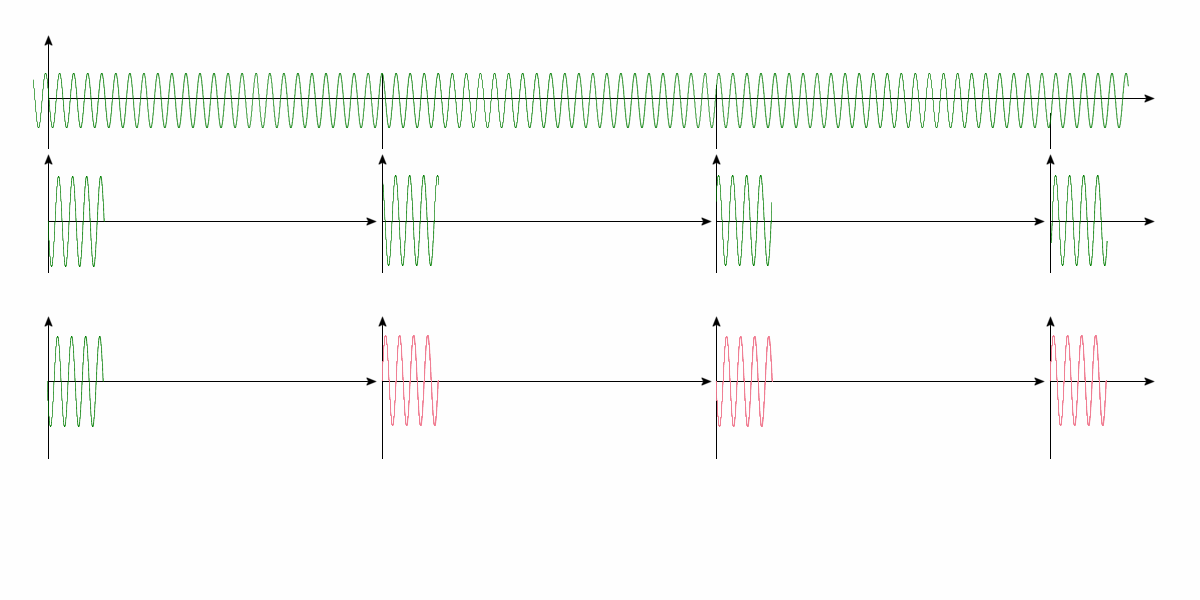Concept of Coherence

Figure 1: Origin of coherence, coherent and non-coherent pulses.

Figure 1: Origin of coherence, coherent and non-coherent pulses.
What is Coherent Radar?
Concept of Coherence
In a pulse radar system, coherence describes the phase relationships between the transmitted and the received pulses. Oscillations and electromagnetic waves are described as coherent if their phase relationships are constant. In case of incoherence, these phase shifts are statistically distributed. Whether radar is coherent or not is determined by the type of transmitter. As transmitters different systems can work in the radar, which are either coherent, partially coherent or incoherent.
Non-coherent Radar Processing
A given transmitter system is the self-oscillating POT (Power Oscillator Transmitter). If such a transmitter is switched on and off by the almost right-angled high-voltage modulation pulse, this transmitter begins to oscillate with a different phase shift with each transmission pulse. This phase shift, which occurs during the start of the oscillation, is a purely random process.
Notice: Self-oscillating transmitters have a random phase from pulse to pulse and are therefore not coherent!
Coherent Radar Processing
Another transmitter system is the PAT (Power-Amplifier-Transmitter). In this system, the transmitter consists of a high power amplifier and is fed by a highly stable continuous oscillation of the master generator, which synchronizes a waveform generator. The condition is that this master generator (also-called coherence oscillator) delivers a phase-stable continuous oscillation. The single transmission pulses then consist of partial sections of this continuous oscillation. Radar sets in which the phase relationship is so stable are called fully coherent. The modulation of the power output stage of the transmitter does not affect the phase relation of the transmitted pulse.
Notice: Low-power master generators with subsequent high-power amplification produce a constant phase relationship between the transmission pulses, i.e. coherence!
Pseudo-Coherent Radar
By means of a circuit gimmick even non-coherent radar sets are able to determine a phase position of the echo signal. Even if the transmitter starts with a random phase, this phase can be conserved for reference purposes by a controlled damped oscillation over an entire reception period. A stable coherent oscillator is forced by the phase of the current transmit pulse to continue oscillating with this phase shift. However, the next transmitted pulse terminates this coherence, which is why this procedure is also-called “coherent on receive”.
Advantages
Doppler frequencies are frequencies in the lower audio range. With the short dwell time on the target, only a few hits can be achieved by surveillance radars. These are only very few (often only one!) oscillation periods of the Doppler frequency to be measured. This is far too little to be measured directly as an oscillation. Therefore, the radar must measure the phase changes from pulse to pulse in order to detect a Doppler frequency.
The most important advantage of coherent radar systems is that even very small phase shifts of the echo signal are detectable and the Doppler effect may used to reduce the influence of fixed clutter. Coherent radars also have a better signal-to-noise ratio than non-coherent systems.
